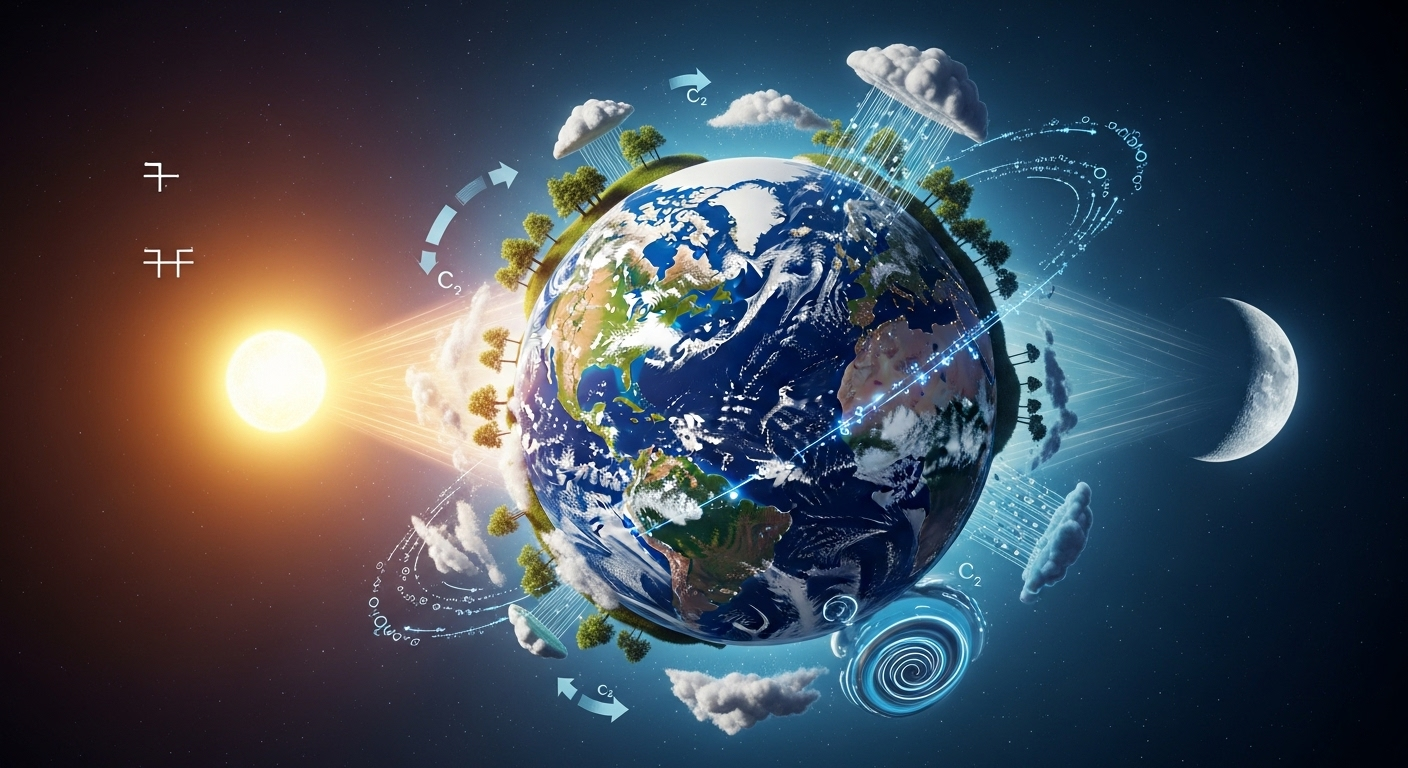Understanding the natural rhythms and drivers that shape Earth's climate is essential for putting current changes into context. This article explores the natural climate cycles of the earth—their mechanisms, timescales, evidence, and how they interact with human-caused warming—to help readers, policymakers, and practitioners make informed decisions. Understanding Earth's natural climate cycles Climate on Earth changes on many timescales because of interactions among the atmosphere, oceans, cryosphere, biosphere, and external forcings. Natural climate cycles are recurring patterns or trends that arise from physical processes—some predictable, others stochastic. These cycles explain past shifts such as glacial–interglacial swings as well as shorter-term variations that affect weather, ecosystems, and human societies. Recognizing natural cycles does not mean dismissing anthropogenic warming. Instead, understanding these cycles helps separate natural variability from human-driven trends, improving climate models, detection and attribution studies, and adaptation planning. Policymakers and resource managers rely on this distinction to prioritize mitigation versus resilience measures. Finally, natural cycles can both amplify and temporarily mask human influences. For example, a cooling phase of a natural cycle may slow the pace of warming for a few decades, while a warming phase can accelerate extreme impacts beyond what greenhouse gas forcing alone would cause. This interplay makes precise communication about risks and expectations crucial. What defines a natural climate cycle? Natural climate cycles are patterns produced by Earth system dynamics or external influences (like solar output). Some cycles have relatively fixed periodicities—e.g., orbital variations—while others are irregular, driven by chaotic processes in the ocean–atmosphere system. A key characteristic is that the cycle arises without direct human forcing. Cycles can be internal (generated by Earth system interactions) or external (driven by changes in solar output, volcanic eruptions, or orbital geometry). Internal cycles include oceanic oscillations such as the El Niño–Southern Oscillation (ENSO) and longer oceanic processes like the Atlantic Multidecadal Oscillation (AMO). External cycles include the multi-thousand-year Milankovitch orbital changes. Understanding whether a climate change signal is due to natural cycles or external anthropogenic forcing typically requires combining paleoclimate records, modern observations, and models that quantify expected responses to different drivers. Why natural cycles matter today Natural cycles shape the frequency and intensity of extreme weather, water availability, and ecosystem productivity. For instance, El Niño events can increase drought risk in some regions and floods in others, while longer cycles such as the AMO modulate hurricane activity and regional temperature patterns. From a practical standpoint, planners need to account for natural variability when designing infrastructure, water storage, and agricultural systems. Misinterpreting natural cycles as long-term trends (or vice versa) can lead to suboptimal investments and increased vulnerability. Scientifically, natural cycles provide a testbed for climate models: if models reliably reproduce observed cycles and their teleconnections, confidence in projections improves. Conversely, mismatches can reveal gaps in understanding, prompting targeted research. Major natural climate cycles and their mechanisms Multiple cycles operate concurrently. The most relevant ones for modern climate variability include orbital cycles, ocean–atmosphere oscillations, solar variability, and volcanic forcing. Each has distinctive mechanisms and typical timescales. Orbital cycles alter the distribution of sunlight across seasons and latitudes. Ocean–atmosphere oscillations redistribute heat and moisture globally. Solar output varies on multiple timescales. Volcanic eruptions inject aerosols that reflect sunlight, causing short-lived global cooling. Recognizing these mechanisms clarifies why certain cycles produce cooling while others yield regional warming. Below is a concise overview of these major cycles and the physics behind them. Milankovitch cycles (orbital forcing) Milankovitch cycles comprise three interacting orbital variations: eccentricity (shape of Earth’s orbit), obliquity (tilt of Earth’s axis), and precession (wobble of the axis). Together, they change the seasonal and latitudinal distribution of incoming solar radiation over tens to hundreds of thousands of years. These cycles are the primary pacing mechanism for the sequence of ice ages and interglacial periods over the past 2 million years. Their effect on global mean temperature is mediated by feedbacks—most importantly ice–albedo feedback and greenhouse gas concentrations (CO2, CH4) that respond to orbital-driven climate states. While Milankovitch cycles explain long-term glacial cycles, their pace is far slower than current warming; the present rapid increase in global temperature is dominated by greenhouse gas emissions rather than orbital changes. Ocean–atmosphere oscillations (El Niño, La Niña, AMO) Shorter-term cycles often arise from coupled ocean–atmosphere dynamics. The El Niño–Southern Oscillation (ENSO) alternates between warm (El Niño) and cool (La Niña) phases in the tropical Pacific on roughly 2–7 year timescales, driving global teleconnections that affect rainfall, temperature, and storm patterns. Longer oceanic modes include the Pacific Decadal Oscillation (PDO) and the Atlantic Multidecadal Oscillation (AMO), which operate on decadal to multidecadal timescales. These modes modulate regional climates—e.g., AMO influences North Atlantic hurricane activity and European rainfall patterns. Because ocean heat content is large, these oscillations can store and release heat, causing multi-year to multi-decade departures from the underlying trend set by external forcings. Solar variability and volcanic forcing Solar irradiance varies slightly on an ~11-year sunspot cycle and on longer timescales. Changes in total solar irradiance and spectral composition can modulate climate, but the magnitude of recent solar variability is small compared to anthropogenic forcing. Volcanic eruptions inject sulfur-rich aerosols into the stratosphere, reflecting sunlight and causing global cooling that can last 1–3 years for very large eruptions. The 1991 Mt. Pinatubo eruption, for example, cooled global temperatures by about 0.5°C for a couple of years. Solar and volcanic forcings are external but episodic; their impacts are significant for short-term climate variability and seasonal-to-interannual forecasting. Timescales: From years to millions of years Timescale is a primary way to categorize natural cycles because causes and impacts differ dramatically between short and long cycles. Policymakers and researchers must be careful to match timescale to decision timelines: infrastructure planning often needs decadal outlooks, while geological studies consider millennia. Short-term cycles (years to decades) often affect weather extremes and resource availability, while long-term cycles (centuries to millions of years) explain major transitions like the onset or end of ice ages. Observational techniques and models vary by timescale: instrumental records excel at short timescales, while proxies reveal longer patterns.





